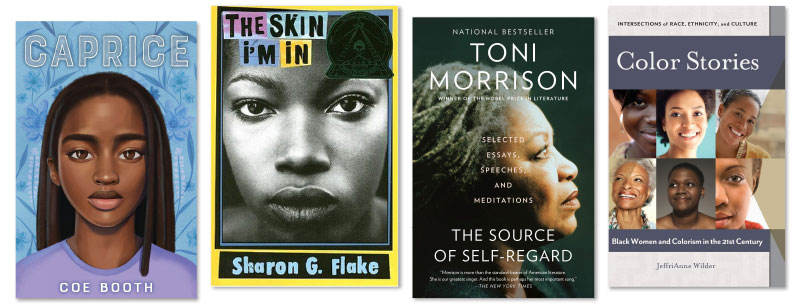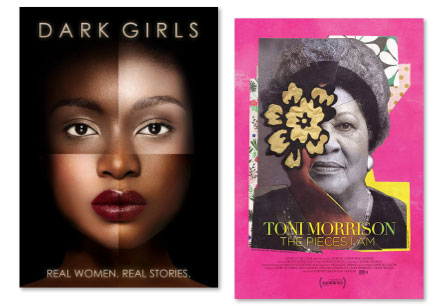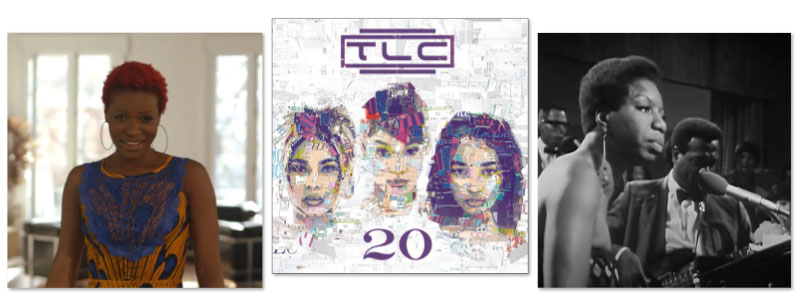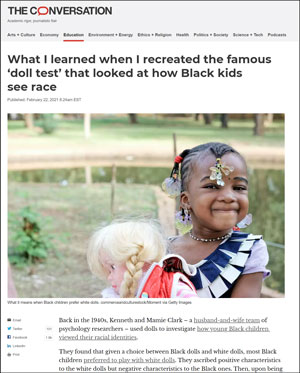8 Supplementary Resources to Enrich Readers' Experience of 'The Bluest Eye' | Refreshing the Canon
SLJ and NCTE have revealed the 2023 round of “Refreshing the Canon” selections. Check out these multimedia recommendations to supplement teens’ reading experience of Toni Morrison's classic, The Bluest Eye.

Last month, SLJ asked librarians and educators to weigh in on which classics should remain on summer reading lists. Inspired by the most popular titles that emerged, SLJ editors and members of NCTE’s Build Your Stack® Committee have curated this year’s round of “Refreshing the Canon” selections.
Additionally, we’ve put together multimodal lists of recommendations—including nonfiction, graphic novels, documentaries, and more—that educators can feature in classrooms and libraries alongside the exemplar texts. Our aim is to inspire educators to breathe fresh life into lessons around these works by giving students new context to understand why these classics are still relevant today.
Be sure to check out the 2022 “Refreshing the Canon” lists for more read-alikes of longtime summer reading picks.
Published in 1970, The Bluest Eye is Toni Morrison's first novel, and centers the trials and tribulations of a young Black girl growing up in post–Depression era Ohio. Pecola Breedlove struggles to thrive while experiencing familial abuse and consistently being diminished as "ugly" by her community for her dark skin. To cope, she develops an overwhelming desire for blue eyes, eventually collapsing emotionally and physically under the weight of deep trauma, self-hatred, and white supremacy.
Incorporate these multimodal resources to provide a deeper exploration of the novel's themes of self-perception, racism and colorism, misogynoir, body image, and Black girlhood for young readers of Morrison's heartwrenching classic.

Read-alikes
Booth, Coe. Caprice. Scholastic. 2022. ISBN 9780545933346.
Gr 5 Up–In Booth's middle grade title, Black tween Caprice is faced with a tough choice: take a spot in the yearlong program at a school she loves, or spend her eighth grade year in Newark with her best friend. However, when her grandmother falls ill, Caprice must go back to Baltimore and face a deep secret she’s suppressed. In this tale of pain and reclaiming the power of one’s story, Caprice has to find her voice to face not only her past, but her future as well. Placing Caprice's experiences alongside Pecola's yields rich conversation about Black girlhood, sexual abuse, and the role of community support in establishing self-identity and healing.
Flake, Sharon G. The Skin I'm In. Hyperion. 2000. ISBN 9781423103851.
Gr 8 Up–Flake's breakout novel centers Maleeka, a Black seventh grader who suffers every day from the taunts of the other kids in her class. If they're not getting at her about her homemade clothes or her good grades, it's about her dark skin. When a new teacher arrives with a visible skin condition and abundant confidence, Maleeka strives to learn to love herself the same way. This older novel explores colorism, discrimination, and self-esteem in a text that may be an undiscovered gem for today's YA audience.
Nonfiction Texts
Morrison, Toni. The Source of Self-Regard: Selected Essays, Speeches, and Meditations. Knopf. 2019. ISBN 9780525521037.
A rich collection of Morrison's essays from 1976 to 2013, primarily from speeches given at college convocations, lecture series, conferences, commencement addresses, and symposiums. Topics include ruminations on culture and craft; the Nobel Prize–winning author even turns her incisive critical eye to her own work (The Bluest Eye, Sula, Tar Baby, Jazz, Beloved, Paradise) and that of others. Library Journal deemed this title "Essential for Morrison readers who wish to supplement their appreciation of her achievements with her thoughts on American life and literature."
Wilder, JeffriAnne. Color Stories: Black Women and Colorism in the 21st Century. Prager. 2015. ISBN 9781440831096.
Part cultural commentary, part empirical analysis, this book offers a compelling study and discussion of colorism that demonstrates how powerful a factor skin color remains in the everyday lives of young Black women. Author Wilder conducted dozens of interviews about the role of colorism in their family and school settings, in the media, and in intimate relationships. Use interview excerpts to provide real-world grounding for Pecola's fraught relationship to her Blackness, and as a prompt to thoughtfully discuss colorism as it manifests for young people in today's world.

Documentary Films
Dark Girls. 2011.
In their emotional and heartfelt documentary, directors Bill Duke and D. Channsin Berry set out to examine why colorism persists in the Black community, and how it affects the women on the receiving end. The film contains interviews with Black women describing the role colorism has played in their lives, with notable African Americans including Viola Davis also detailing her experience. This resource offers up personal accounts of the unbearable adherence to Eurocentric beauty standards that shapes Pecola's life and sense of self-worth.
Toni Morrison: The Pieces I Am. 2019.
This acclaimed film follows American novelist Toni Morrison as she examines her life, her works, and the powerful themes throughout her literary career. Also featured are numerous iconic creators who have been inspired by Morrison's writing and critique. A clip of Morrison recounting the anecdote that inspired her novel's title can be found here: The Story Behind the Title of Toni Morrison’s Legendary Novel “The Bluest Eye”

Music
These musical offerings touch on Black women battling dominant class and beauty standards, internally and externally. Encourage students to follow the thread of self-acceptance (and self-reliance) that emerges from each, and/or to select their own tracks for a thematic playlist.
Lulu Fall-Pretty for a Dark Girl
TLC-Unpretty
Nina Simone-Ain't Got No, I Got Life
 Article
Article
Sturdivant, Toni. "What I learned when I recreated the famous ‘doll test’ that looked at how Black kids see race." The Conversation, Feb. 22. 2021.
This article describes an updated approach to the Clarks' renowned "doll tests" of the 1940s, which were instrumental in the landmark Brown v. Board of Education case that led to U.S. school integration. Sturdivant adjusts her tests to offer a broader range of skin tones in dolls, and observes children's natural play times instead of forcing them to choose a doll in response to direct prompting. This academic perspective roots Morrison's novel in its historical context of the 1940s, and opens doors for teens to further research the foundational depths of anti-Black bias as it affected children then, and now.
|
Resources curated by SLJ's Reviews Editors: Shelley Diaz, Andrew Eliopulos, Kimberly Fakih, Amanda Mastrull, Florence Simmons & Ashleigh Williams and NCTE’s Build Your Stack® Committee, an initiative focused exclusively on helping teachers build their book knowledge and their classroom libraries. Members include Jen Vincent, Seemi Aziz-Raina, Gary Gray, Jr., Jodi Hazel, Carol Jago, Kaie Papesh, Carrie M. Santo-Thomas, Kasey Short, and Aliza Werner.
|
RELATED
The job outlook in 2030: Librarians will be in demand
The job outlook in 2030: Librarians will be in demand
ALREADY A SUBSCRIBER? LOG IN
We are currently offering this content for free. Sign up now to activate your personal profile, where you can save articles for future viewing





Add Comment :-
Be the first reader to comment.
Comment Policy:
Comment should not be empty !!!